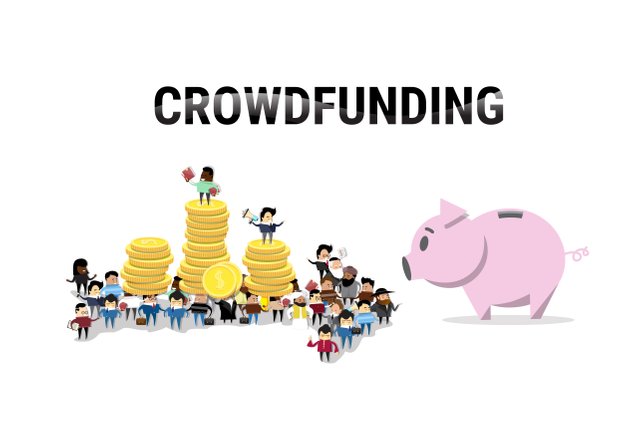
Crowdfunding is one of the latest industries to have discovered the advantages of blockchain technology. While the concept of the blockchain is extremely revolutionary, it had to go through three stages of evolution before it could be practically used in a real-world scenario. Currently, we are living in the blockchain 3.0 era. So, in this article, we are going to go through these different phases of blockchain’s evolution and understand how it is going to impact the crowdfunding industry.
The three stages of blockchain technology
1 Bitcoin and the birth
Bitcoin ushered in the era of blockchain technology. When Satoshi Nakamoto built Bitcoin, he only wanted to answer a straightforward question - will it be possible to create a decentralized peer-to-peer money system? Nakamoto was able to do this by utilizing the blockchain technology. The blockchain allowed two people to directly send Bitcoins to each other without having to go through a bank.
However, the problem with the first-gen blockchain is that it only enables simplified payments. There was no way to add conditions to those transactions. Alice can send Bob 5 BTC, but she can’t impose conditions on those transactions. Eg. She can’t tell Bob that he will get the money only if he performed certain tasks. Adding these conditions would require incredibly complex scripting which can get problematic.
The answer to this problem was blockchain 2.0, which brought in smart contracts and made the blockchain programmable.
2 Ethereum and Smart Contracts
Vitalik Buterin’s Ethereum was the front-runner of the blockchain 2.0 era. A smart contract can help you exchange money, property, shares, or anything of value in a transparent, conflict-free way while avoiding the services of a middleman.
Unfortunately, the problem with these blockchains was that they were too slow for mainstream usage. An industry like crowdfunding requires a system that has low latency and high scalability. This is what ultimately led to the next stage of blockchain’s evolution.
3 Blockchain 3.0 and adoption
In this generation, blockchains focused on scalability, low latency, and interoperability. The dApps created on these blockchains are built for mainstream usage. These dApps can run efficiently enough while giving all the advantages that are expected from decentralization.
How can blockchain 3.0 disrupt crowdfunding?
Let’s understand the basics first. A blockchain is, in the simplest of terms, a time-stamped series of an immutable record of data that is managed by a cluster of computers not owned by any single entity. Each of these blocks of data (i.e., block) is secured and bound to each other using cryptographic principles (i.e., chain).
The three main properties of the blockchain are:
- Decentralization: All the data that is stored inside a blockchain is not owned by one single entity.
- Transparency: All the data that is stored inside the blockchain can be seen by everyone who is part of the network.Immutable: All the data that is inside the blockchain cannot be tampered with because of cryptographic hash functions.
So, how exactly can the crowdfunding industry leverage these properties? How can crowdfunding platforms leverage these properties to help out both the backers and the creators? Let’s take a look.
Helping out the Backers
The biggest problem that the backers face in the current crowdfunding landscape is that they are in constant fear of being scammed. They don’t know if the creators are going to keep their word and use the money to see their project to completion. Plus, even if they do, the backers don’t know if creators can deliver the quality initially promised.
By leveraging smart contracts, it will be possible to create an automated escrow contract between the creator and the backer. This contract can have predefined conditions which can do the following:
- Lock up a part of the backer’s investment in an escrow.
- Release the escrow funds only if the creator completes certain milestones.
This will ensure that the backers’ funds are going to be used ethically. If the creator doesn’t fulfill the milestones, then the escrow funds will be refunded to the backer. Pledgecamp is utilizing this concept to ensure “#backerprotection.” They call the funds locked in the escrow “Backer Insurance.”
Helping out the Creators
Creators often suffer from the fact that the backers don’t trust them enough to give them sufficient funding. By taking care of the backers, as mentioned above, decentralized crowdfunding helps out the creators as well. This ecosystem can help in the creation of a decentralized marketplace. Members of the community can offer their services to help out the creators complete their projects within this marketplace.
Also, traditional crowdfunding platforms take enormous listing fees from creators for hosting their crowdfunding campaigns. In a decentralized crowdfunding platform, like Pledgecamp, it will be possible for the creators to forego the listing fees altogether. All they need to do is allow backers to lock up a generous amount of their investment in the escrow contract.
In simple terms, if you are confident about your project, then you can host the campaign for free.
Conclusion
Blockchain 3.0 can bring in positive disruption to the multi-billion dollar crowdfunding industry. With both backers and investors benefiting greatly from this integration, it won’t be surprising to see more decentralized crowdfunding platforms in the near future.